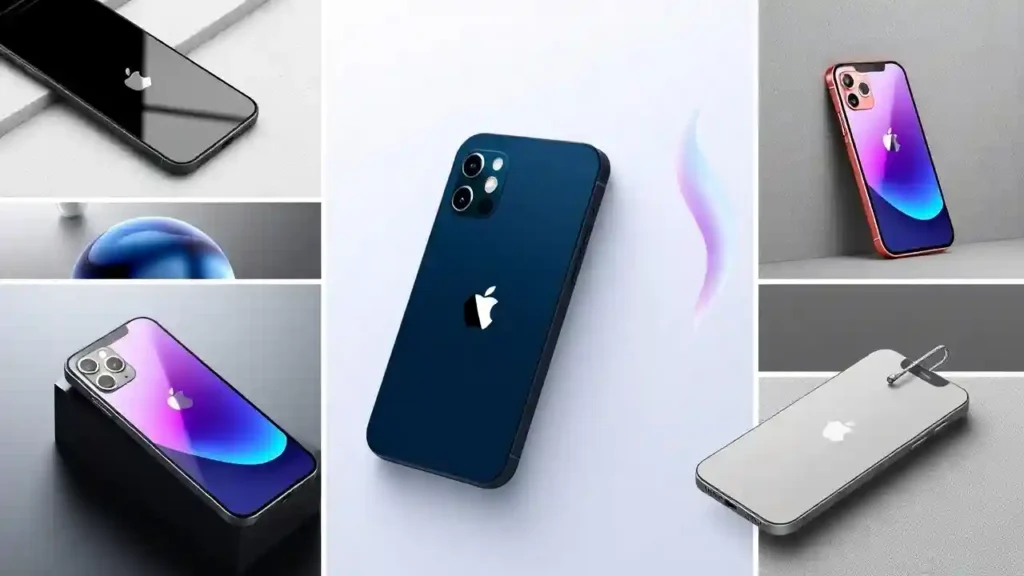According to several reports, Apple is gearing up to unveil an entirely new iPhone 17 Air model this year, featuring a bold and dramatic design overhaul. Referred to as the iPhone 17 Air, though it could also be called the “iPhone 17 Slim” or something completely different, this device is expected to mark a significant departure from Apple’s current iPhone lineup. Here’s everything we know so far about this sleek and highly anticipated addition.
iPhone 17 Air: A Design Revolution
The most exciting aspect of the iPhone 17 Air will undoubtedly be its design. Apple appears to be prioritizing form over function with this model, aiming for an ultra-thin and stylish build at the expense of higher-end specs. According to The Information, the iPhone 17 Air will be noticeably thinner than any previous iPhone and is rumored to feature a body crafted from aluminum instead of titanium, which is used in current Pro models.
However, noted analyst Ming-Chi Kuo has suggested that the iPhone 17 Air might incorporate a hybrid material made from both titanium and aluminum, blending lightweight durability with cost-efficiency.
In terms of size, both Ming-Chi Kuo and Jeff Pu report that the iPhone 17 Air will come with a 6.6-inch display and a resolution of approximately 2,740 x 1,260 pixels. Display analyst Ross Young has slightly refined this estimate, saying the screen will measure 6.55 inches precisely. This OLED display will also support ProMotion technology, enabling a smooth refresh rate of up to 120Hz.
Adding to the design changes, Apple is reportedly working on a smaller hole-and-pill-shaped cutout for the front-facing camera and sensors. Thanks to advancements in metalens technology, Apple is expected to significantly reduce the size of the Face ID sensor, allowing for a cleaner and more minimalist front panel design.
To enhance durability, rumors from Weibo in March suggested that Apple is developing a new coating technology for the iPhone 17 lineup. This could make the display more scratch-resistant while adding an anti-reflection layer to improve visibility.

Camera Innovations
One of the biggest design changes for the iPhone 17 Air involves its camera. Unlike the iPhone 16, which features two rear cameras, and the iPhone 16 Pro, which includes three, the iPhone 17 Air will reportedly feature a single rear camera. This design choice reflects Apple’s effort to make the device as thin and lightweight as possible.
The main camera is expected to use the same 48MP sensor found in the iPhone 16, ensuring high-quality image capture despite the simplified setup. The front-facing camera, however, will see a significant upgrade, increasing from 12MP to 24MP across the entire iPhone 17 lineup.
Additionally, there are rumors that the rear camera on the iPhone 17 Air could be relocated from the upper-left corner to the top center of the phone’s back. This would represent a dramatic shift in the iPhone’s camera layout, breaking with the design Apple has used since the original iPhone.

Performance and Hardware
Powering the iPhone 17 Air will be Apple’s new A19 chip, though it won’t include the “Pro” designation. The A19 chip is expected to be paired with 8GB of RAM, offering solid performance for everyday tasks.
In contrast, the Pro models of the iPhone 17 will feature the A19 Pro chip and 12GB of RAM, emphasizing the iPhone 17 Air’s positioning as a sleek and stylish alternative to the more performance-focused Pro lineup.
Apple’s A19 chips will reportedly be built using TSMC’s 3nm process, specifically the upgraded N3P fabrication process, which promises improved performance and energy efficiency. However, Apple isn’t expected to switch to TSMC’s next-generation 2nm process until 2026.
Apple’s First Custom Modem
Another significant development is the iPhone 17 Air’s potential adoption of Apple’s own 5G modem. For years, Apple has relied on Qualcomm for its modems, but the company has been working on developing its own technology to reduce reliance on external suppliers.
Ming-Chi Kuo has reported that the iPhone 17 Air will feature Apple’s custom modem, which will also handle Wi-Fi, Bluetooth, and GPS in addition to 5G connectivity. Bloomberg corroborates this, stating that the modem will debut in the iPhone 17 Air.
However, early reports suggest Apple’s modem may have some limitations compared to Qualcomm’s. Notably, it will lack support for mmWave 5G, which delivers ultra-fast speeds primarily in major cities. Instead, speeds will top out at 4Gbps, slightly slower than Qualcomm’s existing non-mmWave modems.

Pricing Speculations
Pricing for the iPhone 17 Air remains unclear, with conflicting reports from different sources. The Information claims the iPhone 17 Air could be more expensive than the iPhone Pro Max, which currently starts at $1,200. This would put the starting price of the iPhone 17 Air at around $1,300 or higher.
On the other hand, analyst Jeff Pu suggests the iPhone 17 Air will serve as a replacement for the Plus model in the lineup, implying it could have a similar starting price of $899. This aligns with a report from The Wall Street Journal, which states the iPhone 17 Air will be cheaper than the Pro models.
Apple’s final pricing strategy is typically one of the last details to leak, as it is determined internally by small teams rather than through the supply chain.
Release Date and Final Thoughts
As of now, the iPhone 17 lineup is expected to be announced and released in September 2025, following Apple’s traditional timeline. However, this schedule could change due to production or supply chain challenges.
It’s also worth noting that plans for the iPhone 17 Air are still months away from being finalized. Apple may tweak certain design or feature details before the official launch.
The iPhone 17 Air represents a bold new direction for Apple, emphasizing ultra-thin design and minimalist aesthetics over high-end specs. Would you be willing to compromise on features like a dual-camera setup or Pro-tier performance in exchange for a sleek, lightweight design? Share your thoughts in the comments below!


